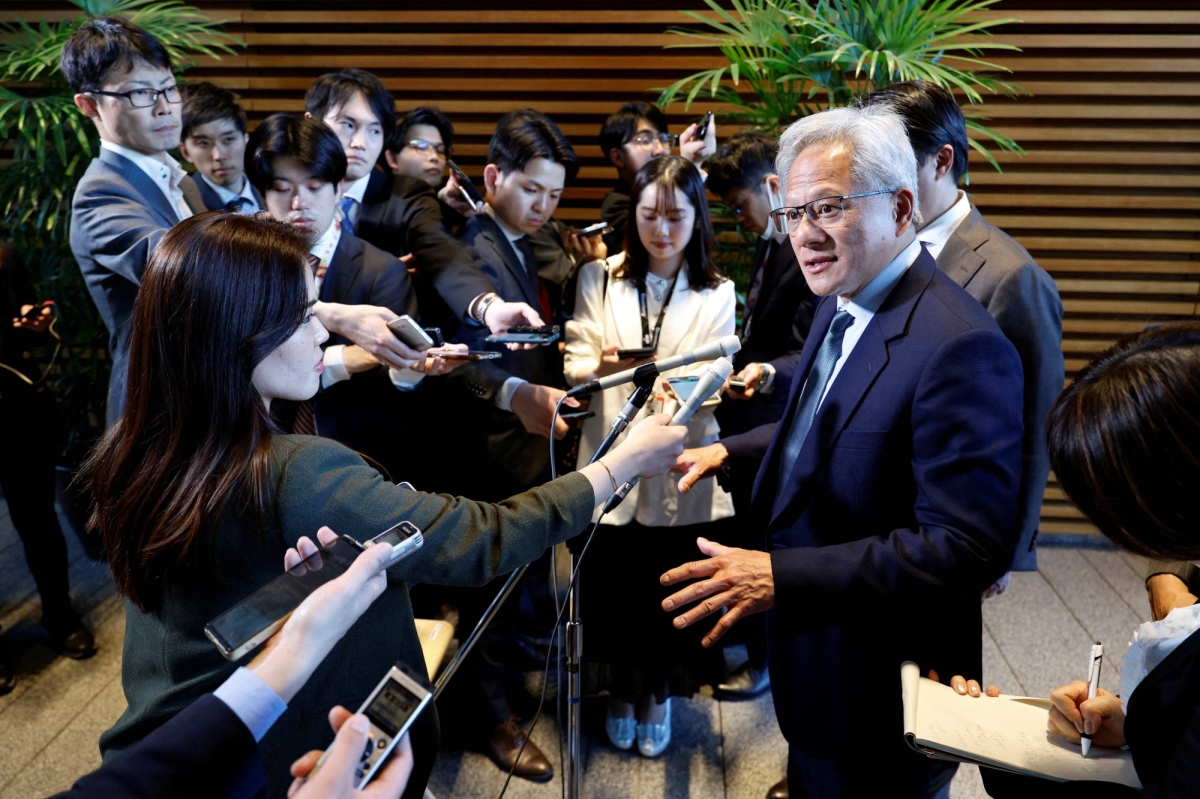Japan's Energy Needs: Nvidia CEO's Plea for AI Growth
The burgeoning field of Artificial Intelligence (AI), particularly the computationally intensive training of large language models (LLMs) and other advanced AI applications, is placing unprecedented demands on global energy resources. This challenge is particularly acute in countries like Japan, which are simultaneously striving for technological leadership and ambitious carbon reduction targets. Recently, Nvidia CEO Jensen Huang's comments highlighting the energy needs of AI development have brought this critical intersection of technological advancement and energy security into sharp focus.
The AI Energy Appetite: A Growing Concern
Huang's plea wasn't simply a lament; it was a stark reminder of the massive energy consumption required to power the AI revolution. Training state-of-the-art AI models necessitates vast computing power, often utilizing thousands of high-performance GPUs (Graphics Processing Units), which are energy-intensive devices. This translates to significant electricity consumption, raising concerns about both the environmental impact and the potential strain on national energy grids.
The Scale of the Problem: Reports indicate that training a single large language model can consume as much energy as a small city over its lifespan. This energy footprint is exponentially increasing as AI models grow in complexity and size. Furthermore, the deployment and operation of these models, not just their training, contribute significantly to the overall energy demand.
Japan's Unique Energy Challenges
Japan faces a unique set of challenges in balancing its ambitions in AI with its energy needs. The country is heavily reliant on imported energy, making it vulnerable to global price fluctuations and supply chain disruptions. Furthermore, Japan has committed to significant reductions in greenhouse gas emissions, requiring a shift towards renewable energy sources. This transition, while crucial for environmental sustainability, presents complexities in meeting the burgeoning energy demands of the AI sector.
Balancing Act: Japan's government is actively pursuing a strategy of promoting AI development while simultaneously decarbonizing its energy sector. This necessitates a multifaceted approach, including investments in renewable energy infrastructure, improvements in energy efficiency, and exploration of alternative computing architectures that are less energy-intensive.
Solutions and Strategies for Sustainable AI Development in Japan
Several avenues can be explored to mitigate the energy challenges posed by AI's growth in Japan:
1. Investment in Renewable Energy: Massive investments in renewable energy sources, such as solar, wind, and geothermal, are crucial to ensure a sustainable energy supply for AI development. Japan's commitment to renewable energy targets needs to be significantly accelerated to meet the increasing demands.
2. Energy Efficiency Improvements: Optimizing the energy efficiency of data centers and computing infrastructure is paramount. This includes utilizing more energy-efficient hardware, improving cooling systems, and employing advanced power management techniques.
3. Development of More Energy-Efficient Algorithms: Research and development efforts focused on creating more energy-efficient AI algorithms and models are crucial. This involves exploring alternative training methods and architectures that reduce computational complexity and energy consumption.
4. Exploring Alternative Computing Architectures: Investigating alternative computing paradigms, such as neuromorphic computing, which mimics the human brain's energy efficiency, could offer long-term solutions. This is a relatively nascent field, but its potential impact is immense.
5. Government Policy and Regulation: Government policies and regulations play a crucial role in guiding sustainable AI development. This includes incentivizing the adoption of energy-efficient technologies, setting stringent emission reduction targets for data centers, and fostering collaboration between industry, academia, and government.
Conclusion: Navigating the Future of AI in Japan
The energy demands of AI development present a significant challenge for Japan, but it's not an insurmountable one. By strategically investing in renewable energy, improving energy efficiency, fostering innovation in algorithm design and hardware, and implementing supportive government policies, Japan can navigate the path towards a thriving AI sector while upholding its commitment to environmental sustainability. Huang's call to action should serve as a catalyst for a concerted effort to ensure that Japan’s AI ambitions are powered responsibly and sustainably. The future of AI in Japan hinges on striking a delicate balance between technological progress and environmental responsibility.
